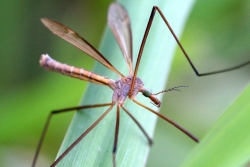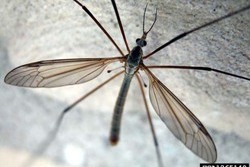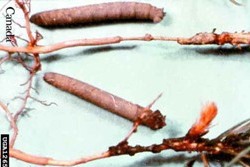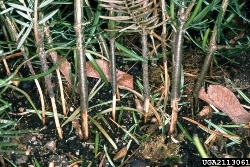Crane Flies and Leatherjackets—Tipula spp.
Crane flies, major pests in Europe, are becoming an increasing problem in North America. Two species, the European crane fly (Tipula paludosa) and the common crane fly (Tipula oleracea), have become established. Crane fly damage is done by the larvae, called leatherjackets (because of their tough skin), that feed on plant roots, rhizomes, and foliage, using their rasping mouthparts. In the case of lawns, damage to grass, expressed as yellow spots and bare patches, can be extensive, but additional damage is caused by skunks digging for the larvae.
The flies have bodies about 3/4 inch long, very long legs, about 4 inches long, and the larvae are about 1 inch long. Looking like giant mosquitoes, adult flies can gather in great numbers, but do not bite or sting. Cultural and biological controls have been found to be effective.
Click on images to view full-size
Identification and Control Information
- European Crane Fly (PDF)—Cornell University
- European Crane Flies or Leather Jackets—Ohio State University
[Photos, left to right: David Cappaert, Michigan State University, Bugwood.org; Janco Tanis, jancology.com, Bugwood.org; Canadian Forest Service Archive, Canadian Forest Service, Bugwood.org; Petr Kapitola, State Phytosanitary Administration, Bugwood.org]



